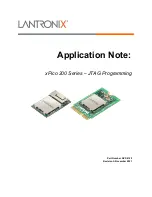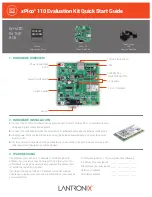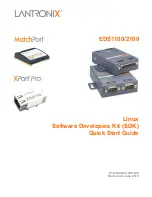
10/10 MN05003003Z-EN
69
14 Programming:via a CANopen network (Routing)
Routing means to establish an online connection from a
programming device (PC) to any (routing-capable) PLC in a CAN
network without having to directly connect the programming
device to the target PLC. The target can instead be connected to
any other PLC in the network. The routing connection enables you
to carry out all the operations that are possible with a direct online
connection between the programming device and the controller:
• Program download
• Online modifications
• Program test (Debugging)
• Generation of boot projects
• Writing files in the PLC
• Reading files from the PLC
Routing offers an advantage which makes it is possible to access
all routing capable PLCs on the CAN bus from any PLC which is
connected with the programming device. You select the control
with which you want to communicate by the project selection. This
provides an easy way of controlling remote PLCs.
However, the data transfer rate with routing connections is
considerably slower than with direct connections (serial or TCP/IP).
This will result in slower refresh times for visualisation elements
(variables) or slower download speeds.
Prerequisites
The following requirements must be fulfilled to use routing:
• The routing PLC and the target PLC must both support routing.
• Both PLCs must be connected via the CAN bus.
• The PLCs must both have the same active CAN baud rate.
• The valid routing Node ID must be set on both PLCs.
Routing features of the controller
The controller supports routing via the CAN bus.
Routing can be implemented without prior download of a user
program (default: 125 kBaud, Node-Id 127). The target PLC must
not be configured as a CAN Master or CAN Device for this purpose.
It is possible, for example, to load a program from the PC into the
EC4-200 via a controller of the XC series. In this case, you assign
the EC4-200 (target controller) with a routing Node ID.
Routing through XC200
To perform a program transfer or routing using TCP/IP through a
connection between XC200 and PC, you must first set the block
size for the transferred data. The packet size (4 KByte or
128 KByte) depends on the transfer type (program transfer or
routing) and the operating system,
Table 16: Block size for data transfer
Routing with the XC200 is possible from BTS version V1.03.03.
The setting of the block size (change of the value in the registry) is
explained as follows.
Figure 82: Program download per Routing
Program/file transfer
Routing
OS <
V1.03.03
OS
f
V1.03.03
OS <
V1.03.03
OS
f
V1.03.03
Block size
Default:
128 KByte
128 Kbyte
4/128 KByte
Routing
not possible
4 kByte
h
Caution!
The program download with a block size of 4 KByte to a
PLC with an operating system version earlier than
V1.03.03 will cause faulty behaviour!
If a program download is performed, the progress bar on
the programming device monitor will only change
erratically (about every 10 seconds).
PC
XC…
EC4-200
XC…
EC4-200
RS232
RS232
CAN
CAN
Summary of Contents for easyControl EC4-200
Page 4: ...II...
Page 10: ...10 10 MN05003003Z EN 6...
Page 14: ...10 10 MN05003003Z EN 10...
Page 22: ...10 10 MN05003003Z EN 18...
Page 38: ...10 10 MN05003003Z EN 34...
Page 62: ...10 10 MN05003003Z EN 58...
Page 78: ...10 10 MN05003003Z EN 74...
Page 96: ...10 10 MN05003003Z EN 92...
















































